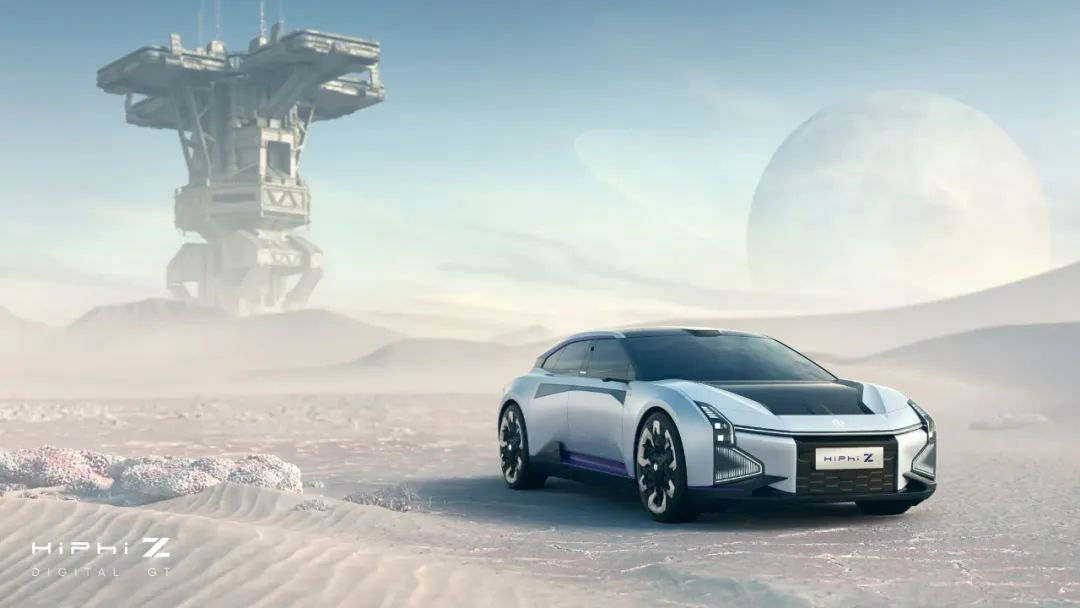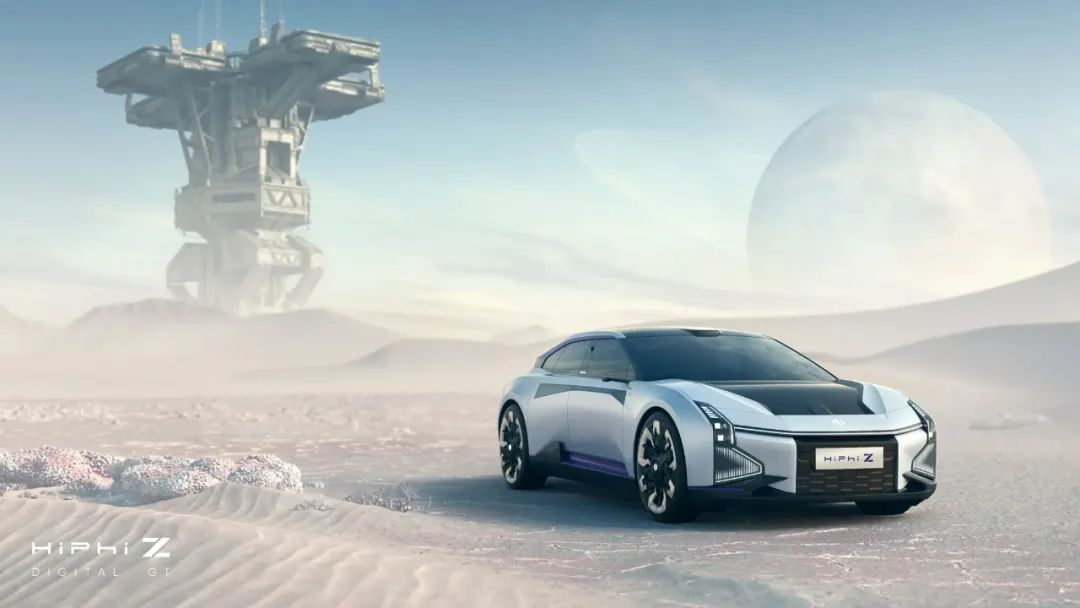Author: Feng Jingang
Taking us back to July 2019, Huachen Auto officially launched the G-Hybrid brand and presented the first mass-produced vehicle, HiPhi X. The unveiling attracted enormous attention, especially towards the NT exhibition-wing doors, due to the futuristic and cutting-edge design.
At that time, few had confidence in a high-end vehicle like the HiPhi X, given that the high-end automobile market had always been forbidden territory for Chinese carmakers. Furthermore, it is even more difficult for a segmented model like the HiPhi X.
However, the appeal of smart electric vehicles for the Chinese automobile industry is that they have managed to remove the core product obstacles. For example, Chinese automakers could now achieve a 0-100 km/h acceleration in four seconds. In addition, the comprehensive product power has been elevated to one level above fuel vehicles. Furthermore, after accumulating over forty years of personnel and industry chain development, the Chinese automobile industry is competent enough to navigate the high-end automobile market and manipulate high-end brands.
Indeed, things are progressing according to this route.
So far, G-Hybrid has delivered approximately 8,000 vehicles with an average transaction price of nearly RMB 700,000. This also implies that G-Hybrid has outcompeted Porsche and other leading players in the electric vehicle market priced above RMB 500,000, becoming the leading player. In the trend of Chinese brands invading the smart electric vehicle market, G-Hybrid is like a shining pearl, dazzling and brilliant.
Chinese people’s dream of owning a high-end automobile has also been realized by the G-Hybrid and other brands. Therefore, the previous forbidden territory naturally no longer exists. So, how did G-hybrid break through this forbidden area? This question is undoubtedly significant. It is not only the secret of G-Hybrid’s automobile manufacturing but also holds great reference significance for other Chinese automakers.
From November 5th to 10th, the fifth China International Import Expo (CIIE) was held under the difficult conditions of the pandemic. G-Hybrid showcased their products once again. Through this event, G-Hybrid’s automobile manufacturing strategy started to show up.
To surpass the high-end automobile market, product power is always the core. Although electric vehicles have had over a century of history, modern smart electric vehicles that are equipped with lithium-ion batteries and “connected” have only been around for more than ten years. Thus, achieving premium quality and excellence is extremely difficult.The solution for GWM (Great Wall Motors) is “co-creation”. This not only includes co-creation with users but also co-development with suppliers. GWM proposes product function design goals and the two teams work together to complete the design task.
The main purpose of GWM’s participation in this conference is to announce the signing of a “low-carbon intelligent co-creation cooperative” agreement with Covestro, a world top 500 and global leading polymer material manufacturer. The two sides will further expand cooperation on the basis of their existing partnership and jointly explore the future of sustainable intelligent mobility.
It is reported that in 2018, GWM and Covestro had already begun cooperation and jointly developed a set of composite materials for intelligent interactive surfaces, which not only guarantees the high glossiness of the car’s appearance, but also possesses stability and impact resistance. Most importantly, it can meet the requirement of infrared transparency. Finally, the “magic key” of HiPhi X B-pillar was brought to life, meeting the intelligent requirements of infrared cameras, face recognition, intelligent displays, touch sensing, and other functions.
GWM has created countless top-level intelligent electric vehicles through self-research and co-creation with Covestro and other similar collaborations. At this year’s CIIE, GWM’s second flagship smart coupe, HiPhi Z, also made its debut, boasting a cool and futuristic design that was popular with visitors.
Some people say that co-creation is not a secret in the industry. Indeed, many new energy automakers are practicing this car-making model, especially new forces. For young brands like GWM, co-creation is a pragmatic move in stages.
The counterpart to co-creation is self-research. There is no strict conclusion about which one is superior. Co-creation is backed by mature suppliers, ensuring quality and performance, while self-research is the inevitable way for automakers’ development, but quality and performance are also criticized.
In fact, the key to co-creation is not the model itself, but the product power demand and the uncompromising car-making stance. Therefore, although co-creation is not a secret, the gap in product power is still evident.
GWM can continuously produce exquisite work because it has high car-making standards. This car-making logic is somewhat similar to Apple, which does not produce phones or other products, but it controls the core of these products.# Introduction
According to Ding Lei, the founder and chairman of the Chinese automaker Human Horizons, “Our young startup, together with global partners such as Karsa, has created world-class products, achieved rapid development, and won market praise and user recognition. At the same time, we mutually empower each other, allowing innovative achievements to benefit our partners and promoting the development of the global market and industry.”
In addition to product strength, excellent business strategies are also necessary conditions for breaking through, and even establishing oneself in the high-end automobile market, including brand operations, user operations, and product operations, among many other topics.
Regarding this, Chen Jun, the co-CTO of Human Horizons, said, “A brand cannot be established in just one or a few months. It requires a long-term process and interaction with users, enabling them to feel the quality, character, and innovation in their experience before gradually forming an attachment.”
Chen Jun revealed that “at the user operations level, another characteristic of Human Horizons is deep co-creation with users.” We’ve conducted research on this – “Human Horizons releases a new technological platform, HiPhi Developer, with more than 5,000 scene cards, leaving other automakers in the dust?” This is the best example of Human Horizons’ co-creation with users.

Based on Human Horizons’ product output and excellent market performance, it is evident that the co-creation model executed by Human Horizons has been quite successful, whether in co-creation of vehicle production or co-creation with users. It is notable that a brand less than three years old can establish a foothold in the high-end market, which speaks to the power and potential of the co-creation model for vehicle production.
As a result of the actions taken by the Chinese new high-end car brands such as Human Horizons, NIO, and IDEAL, the original landscape of the Chinese high-end automobile market has been disrupted. Perhaps the road ahead for Chinese high-end automobile brands will still be fraught with danger, but at least they have started. Can foreign high-end autos compare? The unrestrained cry from over two thousand years ago is now echoing in the skies above the Chinese high-end automobile market.
This article is a translation by ChatGPT of a Chinese report from 42HOW. If you have any questions about it, please email bd@42how.com.
